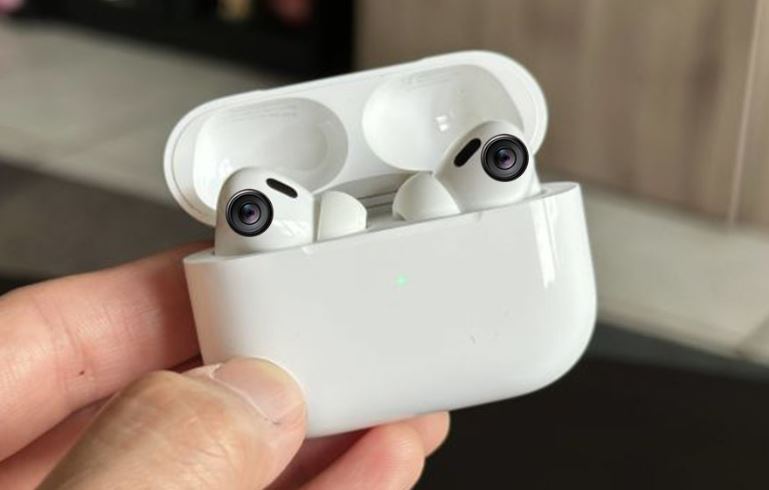Apple intends to include state-of-the-art camera technology in its AirPods range, most likely for commercial release by 2026. Apple is moving significantly towards integrating wearable technology into audio and visual experiences.
Said to be codenamed B798, the future AirPods will incorporate infrared (IR) cameras meant to capture ambient data and enhance user experience with AI-powered characteristics.
Read also: AirPods Lite rumours: What to expect from Apple’s latest earbud offering.
How the Apple AirPods act as a leap in wearable technology
Including cameras on AirPods significantly changes Apple’s approach to wearable gadgets. These infrared cameras, combined with Apple’s Vision Pro, will collect spatial data to guide music depending on the user’s gaze, enhancing spatial audio. This invention makes technology more approachable and practical for daily use since it has features like smart glasses without heavy frames and lenses.
Among its most fascinating features is the possibility of air motions supported by these camera-equipped AirPods. Simple hand gestures allow Uscane to engage with its devices, producing a more immersive and easy experience. This capability complements Apple’s ambition of improving spatial computing, enabling more fluid and natural interactions with digital material.
Many patent filings on IR camera technology and spatial computing highlight Apple’s dedication to this creative breakthrough. These patents expose the company’s intentions to build a robust ecosystem whereby gadgets interact effortlessly, improving entertainment and productivity. Applonly creates a new benchmark for wireless earrings by including these cutting-edge technologies, opening the path for following wearable technology developments.
Read also: Apple overtakes Microsoft as world’s most valuable company
Apple AirPods Implications on the Market
Apple’s development of these sophisticated AirPods has huge market implications. By combining cameras and artificial intelligence (AI), Apple might inspire fresh uses in augmented reality (AR) and virtual reality (VR), therefore establishing Apple as a leader in both of these developing domains.
The company’s emphasis on spatial computing points to a more extensive ecosystem meant to improve users’ interactions with their surroundings and digital information, such as these AirPods.
An exciting innovation is adding cameras to AirPods, raising privacy issues. Apple must ensure strong privacy protections are in place to handle such issues. Apple’s excellent history of respecting user privacy suggests that these new AirPods will have tools enabling customers to limit and regulate the cameras’ data.
Apple’s forthcoming AirPods with built-in cameras will transform the wearable tech scene. These updated AirPods combine audio and visual powers to provide improved spatial audio, support air motions, and flawlessly connect with Apple’s larger ecosystem.
These technologies should establish a new benchmark for wireless earphones and open the path for future augmented and virtual reality developments as mass manufacturing starts in 2026.




